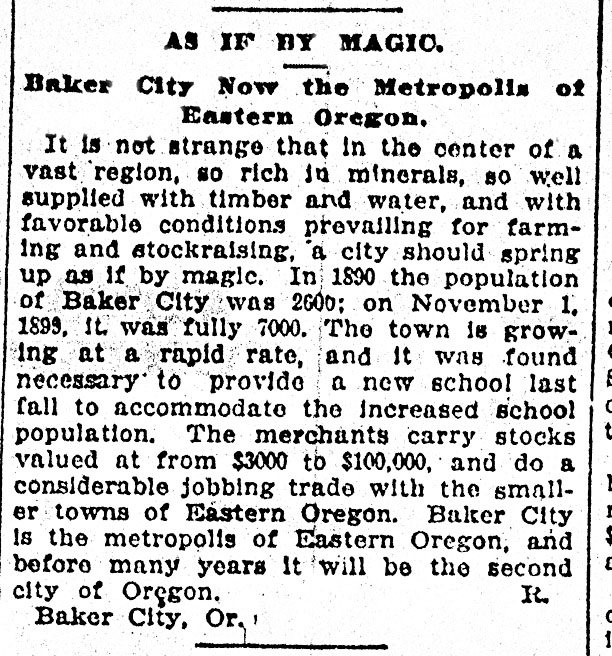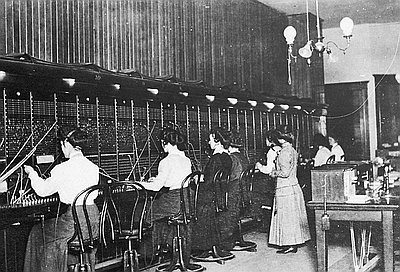- Catalog No. —
- Oregonian, July 1, 1900
- Date —
- July 1, 1900
- Era —
- 1881-1920 (Industrialization and Progressive Reform)
- Themes —
- Environment and Natural Resources, Geography and Places, Transportation and Communication
- Credits —
- Oregon Historical Society
- Regions —
- Northeast
- Author —
- Portland Oregonian
News Article, As if by Magic
This 1900 Oregonian article refers to the rapid population growth in Baker City after a large timber company established operations in the area. In 1889, western timber baron David Eccles and his associates incorporated the successful Oregon Lumber Company (OLC) after the completion of railroad lines made central and eastern Oregon more accessible.
The company often fraudulently acquired timberland through the use of “dummy entrymen,” people who were hired to impersonate settlers and apply for inexpensive government land. The OLC lumber mill in Baker City processed the logs and transported them to the connecting railways for export to market. In order to harvest the pine forests in the remote southern Blue Mountains, the company created the Sumpter Valley Railroad Company and built a narrow-gauge railway into the Powder River Valley. Baker County was founded after gold was discovered in the early 1860s, and miners also used the railroad.
The population of Baker County grew from 6,764 in 1890 to 15,597 in 1900. In 1900, Baker City was the fourth largest city in the state behind Portland, Salem, and Astoria.
Further Reading:
Robbins, William G. Landscapes of Promise. Seattle, Wash., 1997.
Written by Kathy Tucker, © Oregon Historical Society, 2002.

